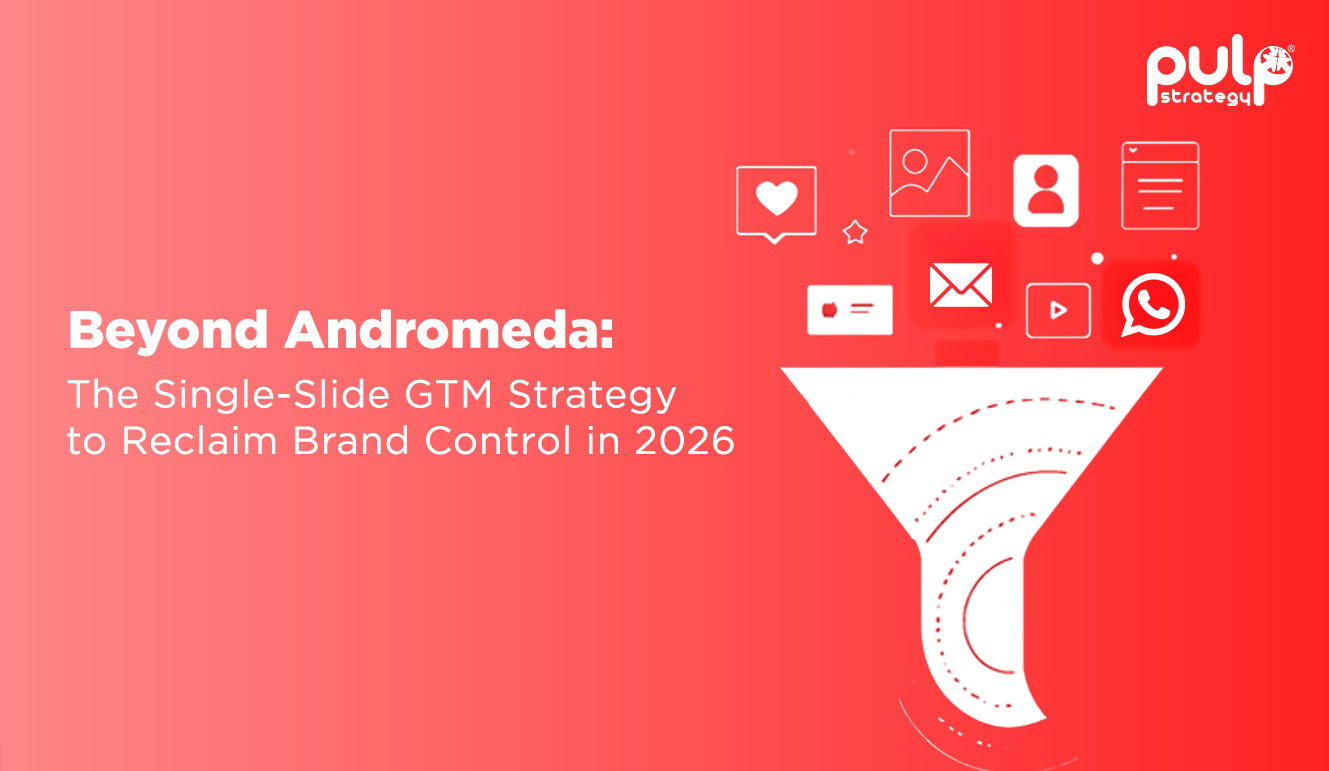Starting a business from scratch can be a daunting task, especially when it comes to building a brand that stands out in a crowded market. However, with the right approach and strategy, it is possible to create a strong and recognizable brand that resonates with your target audience.
Starting a new business is an exciting and challenging endeavour. One of the most critical aspects of this process is building a strong brand identity from the ground up. A well-established brand can help your products or services stand out in a crowded market, attract loyal customers, and ultimately lead to long-term success. In this comprehensive guide, we'll cover the essential steps and strategies for building a powerful brand from scratch, offering valuable insights and advice for startups and entrepreneurs.
1. Understanding the Importance of Branding
Before diving into the process of building a brand, it's crucial to understand the importance of branding and how it can impact your business. A strong brand can:
- Differentiate your products or services from competitors
- Create a memorable impression on customers
- Foster customer loyalty and trust
- Generate word-of-mouth marketing
- Boost your business's overall value
By establishing a robust brand identity, you'll be able to create a lasting connection with your target audience, ultimately leading to increased sales and long-term success.
A. What is Branding?
At its core, branding is the process of creating a unique identity for your business, consisting of various elements such as your brand name, logo, colour palette, typography, and messaging. These components work together to form a cohesive brand image, which is then used across all marketing and promotional materials to create a consistent and recognizable presence in the market.
B. The Role of Brand Identity
Your brand identity serves as the foundation for all of your marketing efforts, helping to shape the way your business is perceived by your target audience. A strong brand identity can help to:
- Build credibility and trust among potential customers
- Communicate your business's values and mission
- Create an emotional connection with your audience
- Influence purchasing decisions
By investing time and resources into building a strong brand identity, you can set your business up for long-term success.
2. Defining Your Brand Strategy
Before you begin the process of building your brand, it's essential to develop a clear and well-defined brand strategy. This will serve as a roadmap for all of your branding efforts, ensuring that you maintain consistency and cohesion throughout the entire process.
A. Identifying Your Target Audience
One of the first steps in defining your brand strategy is to identify your target audience. By understanding who your ideal customers are, you'll be better equipped to create a brand that resonates with them and meets their needs. Consider factors such as:
- Demographics (age, gender, income, education, etc.)
- Geographic location
- Interests and hobbies
- Pain points and challenges
- Purchasing behaviours
Having a clear picture of your target audience will allow you to tailor your brand messaging and visual elements to appeal to their specific preferences and needs.
B. Analyzing Your Competitors
Another critical aspect of defining your brand strategy is analyzing your competitors. By understanding what other businesses in your market are doing and how they're positioning themselves, you can identify gaps and opportunities to differentiate your brand. Consider the following when analyzing your competitors:
- Their brand messaging and positioning
- The visual elements of their brand (logo, colour palette, typography, etc.)
- Their product or service offerings
- Their marketing channels and tactics
Armed with this knowledge, you can develop a unique value proposition and brand positioning that sets your business apart from the competition.
C. Establishing Your Brand Positioning
Your brand positioning is the unique space that your business occupies in the minds of your target audience. It's a statement that clearly outlines what makes your brand different from competitors and why customers should choose you over others. To craft an effective brand positioning statement, consider the following:
- Your target audience and their needs
- The unique benefits and features of your products or services
- Your competitors and how you differ from them
- The emotional and functional benefits your brand provides
Once you've defined your brand positioning, it will serve as a guiding principle for all of your branding efforts, helping to ensure consistency and cohesion across all touchpoints.
3. Developing Your Brand Visuals
With a well-defined brand strategy in place, it's time to start developing the visual elements of your brand. These components will play a significant role in shaping the overall look and feel of your brand, helping to create a memorable and recognizable presence in the market.
A. Choosing Your Brand Colours
The colours you choose for your brand will have a significant impact on the way it's perceived by your target audience. Different colours can evoke various emotions and associations, so it's essential to select a colour palette that aligns with your brand's personality and values. Consider the following when choosing your brand colours:
- The emotions and associations that different colours evoke (for example - red for excitement, blue for trust, and green for growth)
- The colours used by your competitors and how you can differentiate yourself
- The legibility and versatility of your chosen colours across various mediums (e.g., print, digital, packaging)
B. Selecting Your Brand Typography
Typography is another crucial aspect of your brand's visual identity, as it can significantly influence the readability and overall aesthetic of your marketing materials. When selecting fonts for your brand, keep the following in mind:
- Choose fonts that are easy to read and work well both in print and digital formats
- Limit yourself to two or three fonts at most to maintain consistency and cohesion
- Ensure that your chosen fonts align with your brand's personality and values
C. Designing Your Brand Logo
Your brand logo is arguably the most critical visual element of your brand, serving as the face of your business across all marketing channels. When designing your logo, keep the following in mind:
- Create a unique and memorable design that captures the essence of your brand
- Ensure that your logo is scalable and works well in various sizes and formats
- Consider different logo styles (for example - wordmark, emblem, combination) to find the best fit for your brand
4. Crafting Your Brand Messaging4. Crafting Your Brand Messaging
In addition to your brand's visual elements, your brand messaging plays a vital role in shaping the overall perception of your business. This includes your brand's voice, tone, and the specific language you use to communicate with your target audience.
A. Defining Your Brand Voice and Tone
Your brand voice is the unique personality and style that comes through in all of your written and spoken communications. To define your brand voice, consider the following:
- Your target audience and the type of language that will resonate with them
- Your brand's personality traits and values
- The tone you want to convey (e.g., friendly, authoritative, playful, professional)
B. Developing Your Brand Tagline and Slogan
A tagline or slogan is a short, memorable phrase that encapsulates your brand's message and value proposition. When crafting your tagline or slogan, keep the following in mind:
- Keep it short and simple, typically no more than five to seven words
- Ensure that it's memorable and easy to understand
- Align it with your brand positioning and value proposition
C. Creating Consistent Brand Messaging
Once you've defined your brand voice, tone, and tagline or slogan, it's essential to maintain consistency across all of your communications. This includes your website copy, social media content, marketing materials, and more. By maintaining a consistent brand voice and messaging, you'll create a cohesive and recognizable brand identity that resonates with your target audience.
5. Building Your Online Presence
In today's digital age, building a strong online presence is critical for brand visibility and success. This includes creating a professional and user-friendly website, engaging with your target audience on social media, and developing a robust content marketing strategy.
A. Designing Your Website
Your website serves as the digital home for your brand, offering a platform for potential customers to learn more about your products or services, engage with your content, and ultimately make a purchase. When designing your website, keep the following in mind:
- Ensure that your website is visually appealing, easy to navigate, and mobile-responsive
- Align your website's design with your brand's visual identity (colours, typography, logo)
- Create engaging and informative content that speaks to your target audience's needs and interests
B. Building Your Social Media Presence
Social media platforms offer a valuable opportunity to connect with your target audience, share your brand story, and showcase your products or services. When building your social media presence, consider the following:
- Choose the right platforms based on your target audience's preferences and habits
- Develop a consistent posting schedule and engage with your followers regularly
- Share a mix of promotional, educational, and entertaining content that aligns with your brand's voice and values
C. Developing a Content Marketing Strategy
Content marketing is a powerful tool for building brand awareness, establishing thought leadership, and driving website traffic. To develop an effective content marketing strategy, consider the following:
- Identify your target audience's pain points and create content that addresses their needs
- Utilize various content formats (e.g., blog posts, videos, infographics) to engage your audience
- Optimize your content for SEO to increase organic search visibility and drive more traffic to your website
6. Implementing Your Brand Across All Touchpoints
Once you've developed your brand's visual identity and messaging, it's essential to implement it consistently across all touchpoints. This includes your website, social media channels, marketing materials, packaging, and more. By maintaining consistent brand identity across all channels, you'll create a cohesive and memorable brand experience for your customers.
A. Branding Your Marketing Materials
Ensure that all of your marketing materials, both online and offline, align with your brand's visual identity and messaging. This includes:
- Email marketing templates
- Digital and print advertisements
- Brochures, flyers, and other print materials
- Business cards and stationery
B. Branding Your Product Packaging
Your product packaging is another critical touchpoint for your brand, offering an opportunity to create a memorable unboxing experience for your customers. When designing your packaging, keep the following in mind:
- Align your packaging design with your brand's visual identity (colours, typography, logo)
- Consider sustainable and eco-friendly packaging options that align with your brand values
- Include branded inserts or promotional materials to encourage repeat purchases and build customer loyalty
C. Developing Branded Merchandise
Branded merchandise, such as apparel, accessories, or promotional items, can be a powerful tool for increasing brand awareness and fostering customer loyalty. When developing branded merchandise, consider the following:
- Choose high-quality products that align with your brand's values and positioning
- Design merchandise that features your brand's logo, colours, and other visual elements
- Utilize branded merchandise as promotional giveaways, customer rewards, or event swag
7. Monitoring and Evolving Your Brand
Building a brand is an ongoing process that requires continuous monitoring, evaluation, and evolution. As your business grows and evolves, so too should your brand identity. Regularly assess your brand's performance and make adjustments as needed to ensure that it remains relevant, engaging, and aligned with your target audience's needs and preferences.
A. Measuring Your Brand's Performance
To effectively monitor and evaluate your brand's performance, consider utilizing the following tools and metrics:
- Brand awareness: Track mentions of your brand on social media, online reviews, and other digital channels
- Website analytics: Monitor website traffic, user behaviour, and conversion rates to identify areas for improvement
- Customer feedback: Conduct surveys and gather customer feedback to better understand their needs and preferences
B. Evolving Your Brand Identity
As your business and market landscape evolves, it's essential to adapt and refine your brand identity to stay relevant and competitive. Consider the following when evolving your brand:
- Updating your brand positioning and messaging to align with new products, services, or target markets
- Refreshing your visual identity (colours, typography, logo) to maintain a modern and engaging aesthetic
- Revisiting your content marketing and social media strategies to better serve your audience's needs
Bottomline
In conclusion, building a strong brand identity from scratch requires a thoughtful and strategic approach. By following the steps and strategies outlined in this comprehensive guide, startups and entrepreneurs can create a memorable and engaging brand that sets the stage for long-term success. Remember to continually monitor and evolve your brand as your business grows, ensuring that your brand remains relevant and resonates with your target audience. If you are looking for a full-stack partner to help you establish a successful brand, look no further than Pulp Strategy, one of the leading strategic marketing agencies in India.









